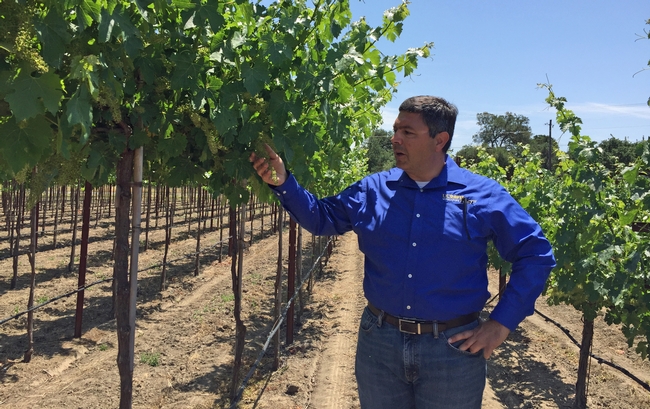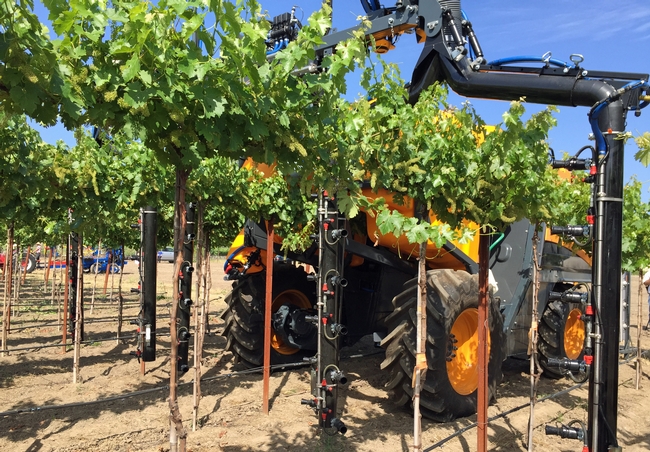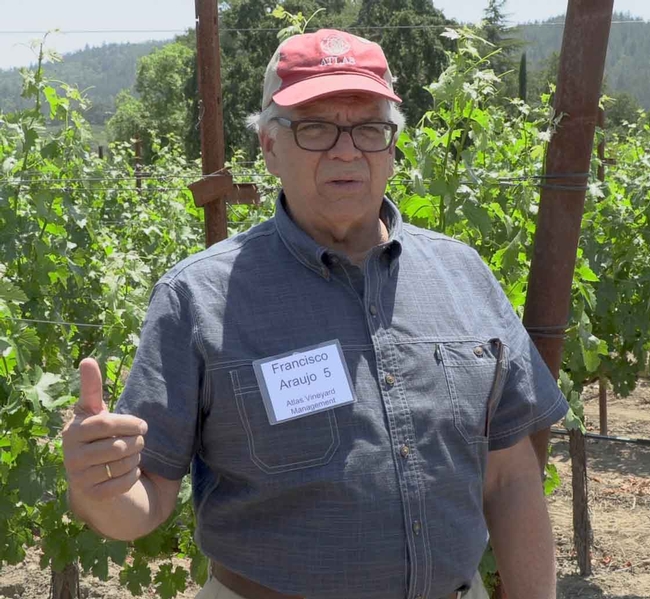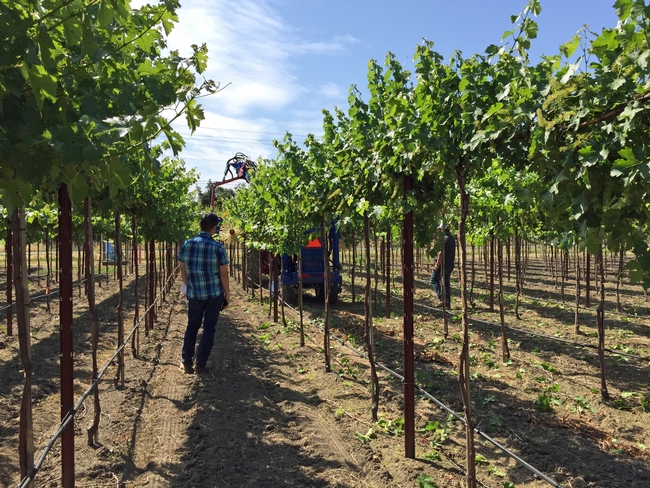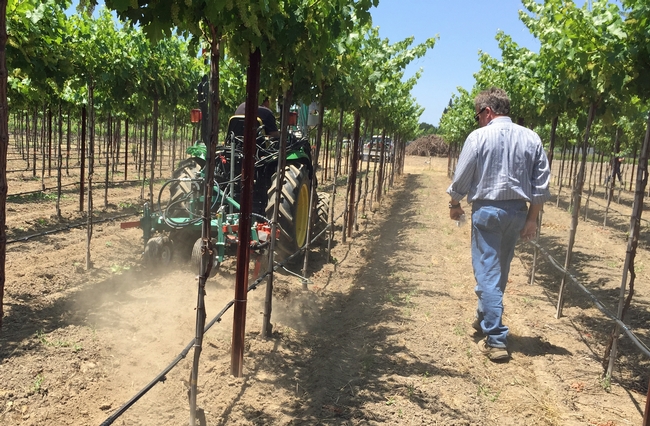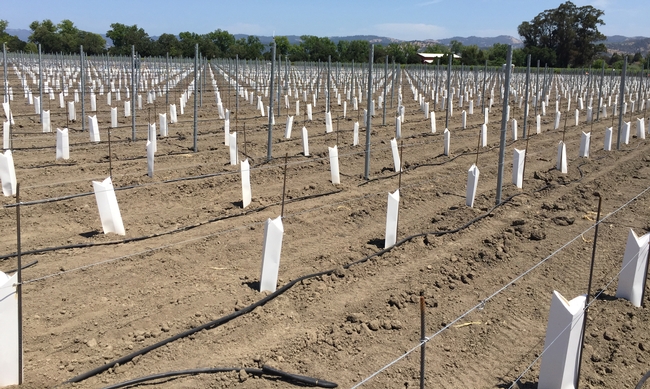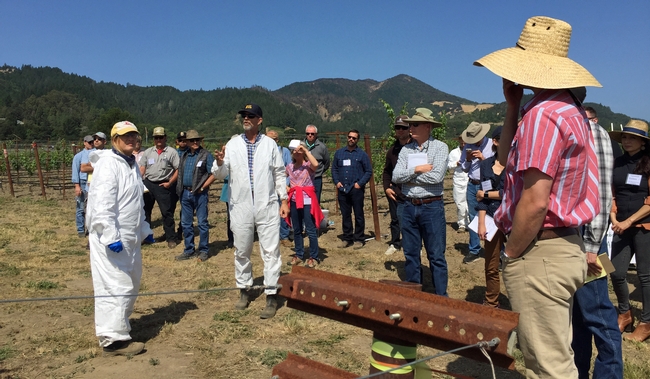
Posts Tagged: John Roncoroni
EVENT :: Weed identification webinar
The UC Statewide IPM Program is hosting a free webinar. Date/Time: Aug 19, 2021 • 1:00 PM...
Three UC Cooperative Extension weed science academics retire
Extracted from the UC ANR News & Events blog...
Ten UC Cooperative Extension academics retire July 1
- Jose Aguiar
- Rachel Elkins
- Beth Grafton-Cardwell
- Allan Fulton
- Kurt Hembree
- Anna Martin
- Glenn McGourty
- John Roncoroni
- Rhonda Smith
- Cheryl Wilen
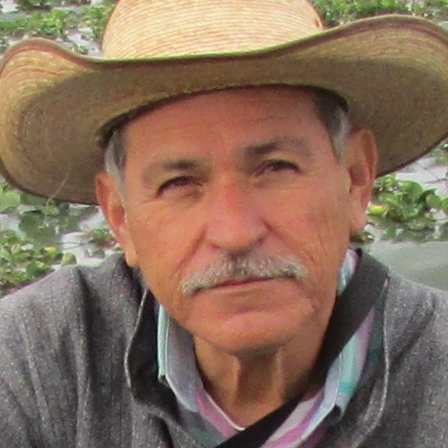
Jose Aguiar, who has been working as a vegetable crops small farm advisor for the University of California Cooperative Extension in the Coachella Valley in Riverside County since 1992, will retire on July 1.
"My job is one of the best jobs in the world. I enjoy the research and education that we provide our community. From the beginning, there was so much to learn, and it has been that way every day on the job," Aguiar said.
What started many years ago to help his family economically became a passion turned into a career. He was 12 years old when, alongside his father, he started working in the Coachella Valley agricultural fields.
"When all my friends went on vacation, I was going to work in the fields. It was my turn to sow asparagus, harvest okra. I did not like it at all because you have to put on a long shirt, because pollen scratches you a lot; it is a very difficult crop to harvest," remembers Aguiar.
Aguiar specializes in bell pepper, which was a great help in 2012. That year in the Coachella Valley, a microscopic worm threatened the bell pepper and chili crop that had an estimated value of $90 million. UC Agriculture and Natural Resources experts worked with farmers to understand why it was a problem there and not in other pepper growing areas. That's where the idea of creating a UC ANR pepper workgroup to research these problems came about.
“Meeting with the small scale producers, I had a list of 12 or 15 problems,” Aguiar said. “I started to speak with other advisors about having a conference for limited scale producers where we could present them with research based information. I invited all the small farmers, and we covered production problems, insect and disease problems, postharvest and even marketing of their particular crops."
Aguiar expressed the essence of his 20 years of passion at work: "I have enjoyed presenting research-based information to farmers and pest control advisers. I have enjoyed walking in many fields and seeing and hearing about the problems firsthand. I have enjoyed working with the small farmers and addressing some of the issues, such as producing a crop with a limited budget. I have enjoyed collaborating with many UC farm advisors, specialists, and the local agencies involved in agriculture. I have enjoyed working with groups doing and working on community gardens."

Rachel Elkins, UC Cooperative Extension pomology farm advisor for Lake and Mendocino counties, plans to retire July 1 after 36 years at UC, 33 years in her current position.
“Rachel has been invaluable to the pear industry in Mendocino and Lake counties,” said Bob McClain, California Pear Advisory Board's field and research director.
After earning a bachelor's degree in international studies at University of the Pacific and a bachelor's degree in agricultural pest management at UC Berkeley, the Richmond native landed an internship helping UCCE integrated pest management in Fresno County in 1982. After earning two master's degrees, in pomology and plant protection and pest management at UC Davis, Elkins joined UCCE as a farm advisor intern in 1986 and became a farm advisor in Lake and Mendocino counties in 1987.
“I began with zero knowledge about pear production, my main assigned crop,” Elkins said. “From this beginning, I dived in; I am still learning every day. I am fortunate to have developed close working relationships with UC, industry and colleagues in Oregon and Washington, as well as other states and countries where pears are grown.”
She co-edited and co-authored over 200 publications. Her most recent co-authored article on predatory phytoseiid mites was just published in California Agriculture journal.
Elkins is known for her research to control codling moth populations by interfering with the insect's sex life instead of using insecticides. Releasing pheromones confuses male moths seeking mates. Working with UC Riverside researcher Harry Shorey, “she was instrumental in developing pheromone puffers for codling moth control,” McClain said, noting that pheromones distributed in orchards on plastic ties were hung by hand 200 to the acre. “With the puffer, you needed two per acre, which saved on labor costs.”
A 2003 UC cost study showed that the pheromone puffers saved growers $9 per ton or nearly $200 per acre, based on 20 tons per acre. The California Department of Pesticide Regulation honored the project with its 2000 IPM Innovator Award. The puffer is now used on nearly all the pear acreage in Lake County. This success in pears led to its use in apple and walnut orchards.
Although pears are her specialty, she has worked with more than 25 fruit and nut crops, including walnuts, apples, kiwifruit, olives and wine grapes. In 1993, Elkins started the UC Master Gardeners Program in Lake County, which is still going strong today.
“My walnut research program has greatly increased in the past decade as higher prices and organic markets have led to new Lake County plantings,” she said. “I established four long-term rootstock trials in 2011-2012, which are providing local growers with important data to decide whether to replace seedling Paradox with newer clonal selections.”
In 2015, she received the American Society for Horticultural Science award for Outstanding Extension Education Materials for her video “Budding, Grafting and Planting Walnut Trees,” honoring renowned Lake County nurseryman Alex Suchan.
Elkins, who was granted emeritus status by UC ANR, will return part-time, funded by the California Pear Advisory Board and Pear Pest Management Research Fund, to continue research assisting the statewide pear industry.

Long time UC Cooperative Extension advisor Allan Fulton said his interest in agriculture started young and never waned. He will retire July 1 after nearly 35 years working in the industry. Most of his career was in extension, first in Kings County and later serving Tehama, Glenn, Colusa and Shasta counties.
“From the time I was tall enough to see over the steering wheel of an old flatbed pickup to guide it while my uncle fed hay to cattle in snow-covered pastures, I knew I wanted to be involved in agriculture,” Fulton said. “There's nothing like the rewards of a good day's work growing food or fiber, whether it was stacking hay, branding cattle, irrigating corn and alfalfa or harvesting the crops.”
Fulton earned bachelor's and master's degrees at Colorado State University, Fort Collins, in agronomy, soil and irrigation science. In 1986, he was named the soils, water and winter grains advisor for Kings County UC Cooperative Extension.
For over 11 years, Fulton developed, demonstrated and taught irrigation management practices for orchard and agronomic crops in order to improve efficiency. He conducted research on soil and water amendments to manage soils with slow water infiltration, and evaluated salt tolerance of agronomic crops, trees and halophytes, plants that thrive when irrigated with brackish drain water. He also conducted research to introduce improved small grain varieties and fertility practices to produce high protein cereal grains.
In 2000, Fulton returned to UCCE as the irrigation and water resources advisor in the northern Sacramento Valley, a position he would hold for more than 20 years. Fulton worked on developing irrigation and soil management practices for orchard and agronomic crops that sustain production, use water and energy efficiently and prevent off-site water quality impacts. He also teamed with other water resource professionals to help farmers and allied industries understand aquifer systems, groundwater management approaches and conjunctive water management concepts.
“I will always be grateful for the countless acquaintances, conversations and collaborations. Many thanks to the growers, my UC colleagues, consultants and policy makers throughout the Central Valley who worked with me over the years,” Fulton said. “I value our precious land and water resources and our agrarian-based society and hope I have contributed to its sustainability in some small way.”
In retirement, Fulton and his wife plan to stay in Red Bluff, where three of their five children and four of their seven grandchildren live close by. And he won't abandon his commitment to agriculture either.
Fulton plans to volunteer one day a week at UC Cooperative Extension to continue a few projects still underway. There will also be time to enjoy other pursuits, he said.
“My wife and I hope to travel the U.S. and Canada,” he said. “That is in God's hands, but we're looking forward to helping others where we can and experiencing what is in store for us.”
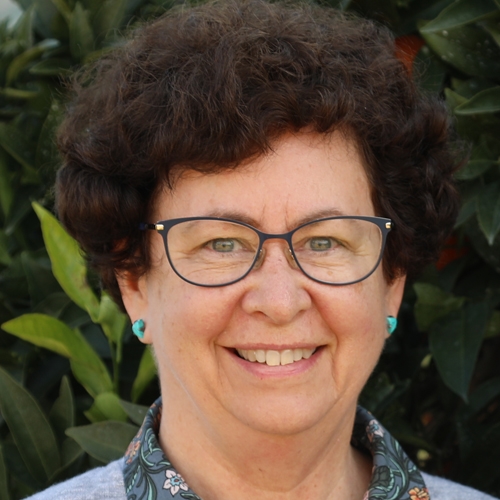
UC Cooperative Extension specialist Beth Grafton-Cardwell retires July 1, a hero in the battle against pests that threaten the livelihood of citrus growers in California, and a successful advocate for reducing use of broad spectrum pesticides.
Grafton-Cardwell – who holds a bachelor's degree in biology from UC Berkeley, a master's in entomology from Purdue University and a doctorate degree in entomology from Berkeley – was named the UC Riverside citrus entomology specialist for the San Joaquin Valley in 1990. Her initial focus was on helping growers reduce their use of harsh pesticides through careful pest monitoring, choice of selective pesticides and preservation of natural enemies.
Along with her staff, Grafton-Cardwell studied the release of predatory mites for control of thrips and mites, validated degree-day units and pheromone traps for citrus cutworm, determined the effects of insect growth regulators on vedalia beetle (a natural enemy of cottony cushion scale), studied the best use of more than 30 new insecticides and miticides, and monitored pesticide resistance of California red scale and citrus thrips.
“It has been a wonderful career full of interactions with colleagues, growers and pest control advisors who shaped the direction of my research,” Grafton-Cardwell said.
During the last decade of her career, pesticide use in citrus has increased once again because of three issues: The drought and increasing temperatures exacerbating pests, new treatments required for pests of export significance, and invasive pests, most importantly the Asian citrus psyllid that can spread the devastating bacterial disease huanglongbing.
“It has been very rewarding to help growers navigate these challenges,” she said. “We have innovative citrus growers in California and excellent scientists at UC. I have every confidence that they will be able meet these challenges and maintain a vibrant California citrus industry.”
In June 2006, Grafton-Cardwell was named director of the UC Lindcove Research and Extension Center in Exeter, a 175-acre facility that supports research projects on citrus breeding, horticulture and pest management. Last year, Grafton-Cardwell hosted the launch of a fundraising program to build an educational complex at Lindcove to be called the Ray Copeland Citrus Center.
“Expanding the capacity of the Lindcove REC to conduct research and extension programs has made the directorship a very rewarding experience,” she said.
In retirement, Grafton-Cardwell plans for frequent travel to visit her children and grandchildren in Missouri and Massachusetts, working with community organizations in the Visalia area and, as an emeritus specialist, writing up past research and assisting with Lindcove's fundraising campaign.

Retiring UC Cooperative Extension weed science advisor Kurt Hembree credits his mentor and predecessor, Bill Fischer, for his successful 26-year career conducting a weed research and extension program for farmers in Fresno County.
“He instilled in me a real appreciation for both the art and science behind weed management,” Hembree said.
Hembree started working as Fischer's agricultural assistant when he was a plant science student at Fresno State. After graduation in 1986, Hembree was promoted to staff research associate, a position he held for eight years.
Recognizing the opportunity to succeed Fischer in his academic role, Hembree returned to Fresno State to complete a master's degree. Fischer retired in 1994 and Hembree was named UCCE weed science advisor later the same year.
Hembree said he was privileged to work with a tight-knit group of academic and non-academic staff, growers, consultants and the allied industries.
“Everybody knew everybody. I developed strong friendships over my career,” he said. “I cherish that.”
An early research success set a course for the future.
The weed nightshade posed a significant problem in seeded fields of processing tomatoes, a plant in the same family. Hembree conducted trials on a new product that selectively removed the nightshade.
“That was a major breakthrough,” Hembree said. “We were able to get the product labeled for tomatoes and it made a huge impact right away.”
That was just the beginning.
“When I came on board, there weren't many products registered for weed control in orchards, vineyards and agronomic crops,” Hembree said. “We worked closely with the industry and there were lots of opportunities to look at new products. These new tools were economically sound and reduced the hard labor of hand weeding.”
In retirement, Hembree plans to move with his wife to northern Mississippi to be closer to family.

Anna Martin, UC Cooperative Extension nutrition, family and consumer sciences advisor in San Joaquin County, devoted her career to the health and wellness of youth and adults locally and statewide. She retires July 1 after 26 years serving in various UCCE roles that focus on nutrition, food safety, physical activity and food security education.
With a bachelor's degree in home economics from California State University in Sacramento, Martin took a part-time position in 1993 as an educator with the Expanded Food and Nutrition Education program in San Joaquin County. A year later, she was elevated to full time to also work on the Food Stamp Nutrition Education Program, which is now called CalFresh Healthy Living, UC. Both programs are federally funded initiatives administered by UC Cooperative Extension to help low-income families use their food budgets to put healthful meals on the table.
In 2001, Martin completed a master's degree in community nutrition and was named to the academic position she held in San Joaquin County the next 19 years.
“I designed my program to promote individual, community, system and environmental changes to positively impact the health behaviors of low-income youth and families,” Martin said. “Working with my colleagues across the state, we sought to understand and address obesity and chronic disease prevention, health disparities, food safety and food insecurity.”
Martin studied the health behaviors of low-income populations to develop curricula, delivery methods, evaluation tools and other materials that could be incorporated into the education programs. Over the years, Martin co-authored 26 peer-reviewed publications, 62 abstracts or posters, and 52 non-peer reviewed publications or reports.
Despite these many achievements, Martin said she most valued the interactions with current and past co-workers and colleagues in San Joaquin County and across the state, the people she describes as her “work family.”
“I think the experience has been so positive because we come together around projects and programs that make a difference in the health and welfare of the families we serve,” Martin said. “My years with Cooperative Extension have created strong bonds within UC ANR and within my community that I foresee will last a lifetime.”

When Glenn McGourty joined UC Cooperative Extension as a plant science advisor in Mendocino County in 1987, he was one of the first farm advisors in the state to have support for organic and sustainable farmers written into his job description. He helped transform Mendocino County into an environmentally friendly farming leader in California. McGourty retires July 1.
After earning a bachelor's degree in botany at Humboldt State and a master's degree in plant, soil and water science at the University of Nevada Reno, McGourty worked as a Cooperative Extension urban horticulturist in Las Vegas. Later he was a lecturer in the Environmental Horticulture Department at Cal Poly, San Luis Obispo, and managed his family's walnut farm in nearby Paso Robles part time.
When McGourty was named a UCCE farm advisor, UC was beginning to endorse a systems approach to sustainable farming.
“I was certainly one of the people who took it to heart,” McGourty said.
In the late 1980s, most grape growers in Mendocino County disked the soil in vineyard rows every year to reduce weeds. Insecticides were applied that kept workers out of the vineyard for three weeks.
“Vineyards seemed pretty barren and not friendly to nature. We had a lot of soil erosion and water quality issues,” McGourty said. “My colleagues and I tried to find solutions that would boost soil organic matter and encourage beneficial insects and mites. One of our landmark research projects was coming up with good cover cropping systems for wine grapes.”
Those practices are widely implemented today, and across California interest in soil health and sustainability continue to grow. McGourty was assigned to also serve Lake County, where wine growers there adopted a strong interest in sustainable wine-growing practices.
“We have the Healthy Soils Program, in which CDFA is paying farmers to grow cover crops and use compost to sequester carbon in the soil. This came out of our research on alternative farming systems conducted in our region,” McGourty said.
Another research interest has been evaluating wine grapes from the Mediterranean region adapted to warm climates.
“After many years of working with ornamental plants, I realized that the plants that do best in California are all from a Mediterranean climate region,” McGourty said. “It made sense for me to look for wine grape varieties that like that climate, too.”
McGourty has been honored by UC ANR with emeritus status. As an emeritus advisor, McGourty plans to work on a national online database of wine grape varieties adapted to warm climates and a Lake County wine grape research project.
Retirement promises to be busy for McGourty. In March, he received the most votes in the primary election for a position on the Mendocino County Board of Supervisors. He will be immersed in campaigning until the runoff election in November.
Even if the election doesn't go his way, McGourty won't be idle. He manages a 10-acre wine grape and walnut farm on the Russian River, where he farms with the sustainable practices he taught local farmers during his career.
“I am so lucky! I have had one of the best jobs in UC and live in one of the prettiest places in California,” he said.

After 38 years of service, John Roncoroni, UC Cooperative Extension advisor specializing in vineyard weed management in Napa County, plans to retire July 1.
Over the years, Roncoroni has become a trusted resource for weed management research and extension, not only in the North Coast, but throughout California. He is known for his research on conventional and organic herbicides, hedgerows in vineyards, irrigation pond weed control, and sheep for grazing weeds in commercial trees and vines.
“Over the years working with John Roncoroni, I experienced firsthand his dedication, passion and knowledge to educate farmers and agricultural workers – both in English and Spanish – about best management practices to control and eradicate invasive weeds and weeds of concerns for the agricultural industry. John will be missed greatly,” said Jose Chang, Monterey County assistant agricultural commissioner and former deputy agricultural commissioner in Napa County.
After earning a bachelor's degree in environmental policy analysis and planning at UC Davis, Roncoroni began his career as a UC Davis postgraduate researcher in 1983, then became a staff research associate working with other weed scientists in crops, forest and rangelands. He earned an master's degree in horticulture at UC Davis in 1999.
In 2007, when Roncoroni became a UC Cooperative Extension advisor in Napa County, most conventional grape growers used glyphosate, or Roundup, for the weed control.
“In fact, Roundup only was considered the most sustainable weed management method,” Roncoroni said. “This over-reliance on glyphosate resulted in biological resistance by weeds.”
He taught growers about alternative herbicides and non-chemical weed control methods and how to make these methods more effective. Little did he know that this research would become even more valuable when some consumers began to object to glyphosate use.
Because he has studied weed management in a broad array of environments, Roncoroni is often asked by UCCE colleagues to give weed control tips to different audiences ranging from golf course turf managers to small-scale Mien strawberry farmers.
“Over the years I have had the opportunity to work on weed control in forestry, rangeland, row crops, alfalfa, fruit and nut trees, but it was my early training in weed management in turf and ornamentals, mulches and alternative weed control that added to my effectiveness in teaching weed control to urban audiences and to training UC Master Gardeners,” said Roncoroni, who has trained more than 1,700 UC Master Gardener volunteers in weed identification, biology and management.
Roncoroni's expertise has been recognized by the California Sustainable Winegrowing Alliance, which asked him to assist in writing their standards for sustainable winegrowing, and the California Department of Pesticide Regulation, which asked him to serve on its Pest Management Advisory Committee. In 2018, the California Weed Science Society named Roncoroni an Honorary member, its highest honor.
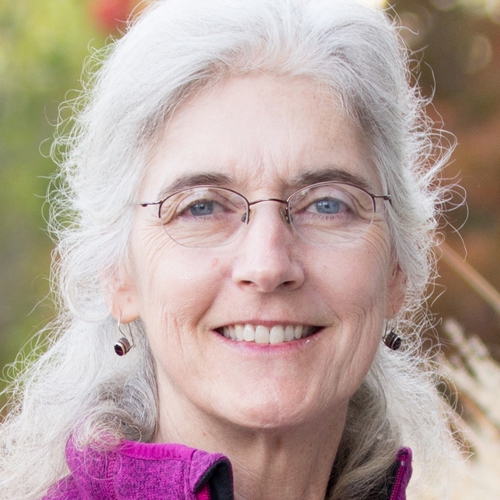
Rhonda Smith has been heralded as the “heroine of the vineyards” for her groundbreaking work in helping combat the parade of pathogens and other problems that have plagued Sonoma County grapevines – and alarmed growers.
A scientist first and foremost, Smith steadily emerged as Sonoma County's expert on all things wine grape during her nearly 34 years as a University of California Cooperative Extension viticulture advisor. Over the decades, she used her scientific know-how, meticulous research methodology and incredible work ethic to advance wine grape production in Sonoma County.
She cultivated working relationships with growers and vineyard managers, setting up field trials and collecting data in vineyards throughout Sonoma County. As the years rolled by, she earned the respect and admiration of grape growers who wonder what they will do without her as she heads into retirement.
“Rhonda Smith became a true icon in Sonoma County viticulture for her timely research and her effective way of communicating valuable information to the wine grape industry,” said Santa Rosa grower Bob Dempel.
Tito and Janet Sasaki, who farm wine grapes in the Sonoma Valley, are among the growers who have benefited from Smith's dedication to the wine grape industry.
“Rhonda Smith is the quiet heroine of the vineyards in Sonoma County. She has been the family physician of Sonoma County vines for more than three decades,” said Tito Sasaki, past president of Sonoma County Farm Bureau and a long time agriculture industry leader. He marvels at how she has managed to raise a family while coming to the rescue of growers facing problems like red blotch virus, vine mealybug, Pierce's disease and many other threats.
JanetSasaki said, “Rhonda is the hardest working person I know. My friends and I have been working with her since 1989. No vineyard is too small for her to take an interest in the problem. She is very respected by everyone in the wine grape industry.” - Tim Tesconi
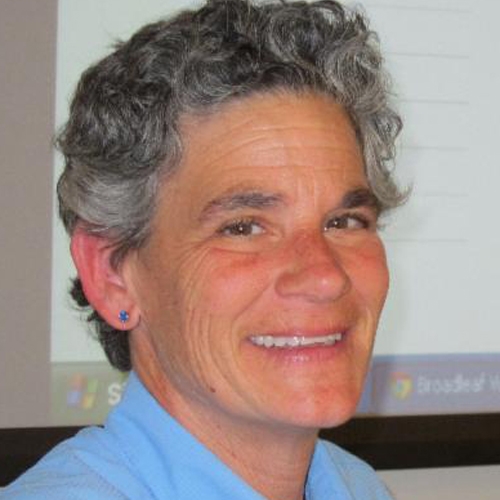
UC Cooperative Extension integrated pest management advisor Cheryl Wilen retired in April after serving UC Agriculture and Natural Resources in a wide variety of leadership and academic capacities during her 25-year career. To help with transitions in the San Diego County UCCE office, Wilen accepted a six-month assignment in May to continue serving as interim director.
Wilen earned a bachelor's degree in horticulture at the University of Maryland, a master's degree in horticulture at University of Arizona and a doctoral degree at UC Riverside. Following graduation, Wilen worked a year at UC Riverside as a post-doctoral fellow.
In 1995, Wilen was hired by UC ANR to conduct applied research in the turf, ornamental horticulture and nursery industries to develop and promote the use of integrated pest management in San Diego, Los Angeles and Orange counties. She shared her results and information generated by scientists across the university with growers and pest control advisers to reduce the use of toxic pesticides, cut the cost of pest control and use environmentally sound methods in production.
Over the years, Wilen was frequently tapped to take on leadership roles while maintaining her academic program. She served as acting and interim director of the Statewide UC IPM Program, program leader of UCCE's Endemic and Invasive Pests and Diseases Strategic Initiative, and as county director in San Diego County. Wilen also had opportunities to take sabbatical and study leaves to improve her Spanish-speaking skills, learn about international participatory extension methodology and receive training on research methods to study snails and slugs.
“I love working with UC Agriculture and Natural Resources,” Wilen said. “The positions I held matched well with my professional and personal style. I always felt that I was responsible for choosing my destination and the journey to get there, whether that was my career or my research and extension programs.”
Wilen said she also valued the relationships she developed over the years in her job.
“I met and became friends with people in UC that I would never have been so lucky to know without the opportunities afforded me by serving on diverse committees,” Wilen said.
Wilen has been awarded the honor of emeritus status, which will continue her academic relationship with UCCE even after her stint in the director post is complete.
“I have a couple of grants I'm continuing to work on,” she said.
She also has plans to do things that she didn't have time for while working full time.
“Plans for my free time include entering sweepstakes, organizing electronics cables, continuing to paddle with my outrigger canoe club, exploring the outdoors, travel, volunteering and enjoying time with my partner and the rest of my family,” she said
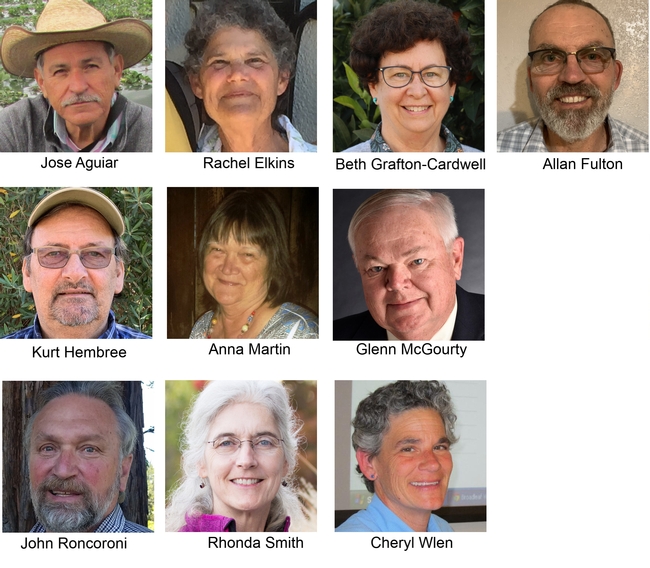
UC ANR's 2020 academic retirees.
Growers get labor-saving ideas at UC Grape Day
Will machines replace the romance of the hand-cultivated wine grape vineyard? A “touchless” vineyard was among the latest research on labor shortages, weeds and pest management by UC Cooperative Extension scientists discussed at Grape Day at the UC Davis Oakville Station, located in the epicenter of California wine country, on June 6.
About 200 wine grape growers, vineyard consultants and other industry people attended to learn about the latest UC Cooperative Extension research. Vineyard managers from boutique wineries such as Fork in the Road to Pine Ridge Vineyards to the Fortune 500 wine company Constellation Brands gathered at the research station's experimental vineyard. Several vineyard equipment representatives brought their machines to the field to demonstrate their weeding, pruning and canopy management capabilities.
Addressing labor shortages
To help growers attract and retain farm workers, Monica Cooper, UC Cooperative Extension advisor for Napa County and her research assistant, Malcolm Hobbs, are conducting a survey of agricultural workers to determine the factors that affect job satisfaction. They found the number of female workers in Napa County has increased rapidly since 2013. “Women may be moving into the labor pool to fill vacancies caused by the decline in the number of male workers migrating to the U.S. for agricultural work,” Cooper said.
They plan to provide participating companies with custom recommendations for recruiting and retaining workers.
“We will also be generating a generic summary that will be widely shared with participants and non-participants at the close of the study. For now, we cannot make any general conclusions or recommendations because data collection is ongoing,” Cooper said. “We are aiming to distribute our final report this winter, so stay tuned.”
To help growers reduce their need for hand labor, UC Cooperative Extension viticulture specialist Kaan Kurtural designed a “touchless” demonstration vineyard that is mechanically managed. The mechanized vineyard is one of six trellis systems he is studying for water use, nitrogen use efficiency, yield and fruit quality of the wine grapes.
“We're always looking for ways to improve yield, quality and to reduce cost,” said Francisco Araujo, director of viticulture for Atlas Vineyard Management. “In light of the labor shortage we're facing right now, Kaan is exploring new production systems that include new trellises, mechanization, different types of mechanization from pruning to shoot thinning and trunk suckering. He's obtaining information about how these new trellis systems that he is investigating are going to play with yield and quality.”
The touchless vineyard experiment started out as a demonstration at first, but with grower interest, it turned into a full-blown research project.
“It started as way of saving labor costs, but when we started looking at the physiological aspects of how these plants grow, we saw the benefits from the quality point of view in addition to the labor savings,” said Kurtural, who is based in the Department of Viticulture and Enology at UC Davis.
A traditional vineyard in the Napa area is about a meter or 36 inches above the vineyard floor with vertical shoots held up with wires, which are moved by hand.
Saves water
“We said, ‘Why don't we turn the system upside down?' Grow a tall trunk then put the bilateral cordon about 62 inches above the vineyard floor, that way we can push the rows a lot closer,” said Kurtural, who oversees the 40-acre Oakville experimental vineyard. The leaves grow down to generate the same leaf area as a traditional vineyard, but the leaves in the mechanized vineyard use water more efficiently so the no-touch vineyard requires less water compared to traditional vineyard systems.
“This is a dense system, this is 1.5 meters by 2 meters, roughly 1,340 plants per acre – we're getting by here on a third to quarter acre foot of water,” Kurtural said.
“It costs us roughly about a dollar in labor operation costs to manage each plant in a traditionally farmed vineyard of roughly about 1,300 plants per acre on the North Coast now,” Kurtural said. “The no-touch plants are costing us about 7 cents in labor operations costs.”
“The biggest expense is pruning, after that we go through what they call trunk suckering, which is also done mechanically here, and after that they will do shoot removal to open up the canopy. That's also done mechanically. After that, if there's need, they will do leaf removal, that's also done mechanically. And one last resort, if there's too much crop here, they will shake off excess berries with a harvester.”
The conventional system yields up to 5 to 6 tons per acre whereas the mechanized vineyard yields 7 to 8 tons per acre.
“These clusters set far fewer berries than a traditionally managed vineyard, but the berry size is also very small, which is what the winemakers like,” he said.
During harvest, grapes picked by machine are sorted on board the harvester so they go into the winery in uniform sizes, whereas hand-harvested grapes have to be sorted on a tray before they are put into the press tank.
“We made wines from these last year and compared to our traditionally farmed vineyards. Until we tell people what it is, they cannot distinguish the quality of the fruit or the wine.”
Weed and pest management
John Roncoroni, UCCE weed science farm advisor in Napa County, discussed options for weed control among young grape vines.
In the past, many vineyards were fumigated before planting for disease control, but it also provided weed control for young vines.
“With the loss of most fumigants for use in vineyards, hand-weeding was often used to accomplish this task,” Roncoroni said. “Increased costs and decreased labor force have made hand weeding impractical. Mechanical cultivation, at this point, is too imprecise – either leaving weeds close to young vines or causing damage by being too close.”
Covers on young vines allow the use of many post-emergence herbicides to control weeds, but Roncoroni cautioned that application of post-emergence herbicides on vines that aren't protected by mature bark may damage or even kill the vine.
“Herbicide use on vines less than 3 years old is a risky endeavor,” Roncoroni said. “Follow all label requirements, paying special attention to soil and irrigation recommendations.”
Lynn Wunderlich, UC Cooperative Extension advisor for the Central Sierra, and Franz Niederholzer, UC Cooperative Extension advisor for Colusa, Sutter and Yuba counties, demonstrated how to calibrate sprayers and to get uniform coverage when spraying fungicides.
In 2016, UC Davis researchers identified the three-cornered alfalfa hopper, Spissistilus festinus, as a vector of grapevine red blotch virus. Cindy Preto, a Ph.D candidate in the UC Davis Department of Entomology who is assisting UC scientists studying the three-cornered alfalfa hopper's biology and host plants, provided an update on their research.
Araujo, the viticulture consultant, said he and his colleagues value the university's research. “Napa Valley is a place where quality is paramount yet more and more we have labor shortage, we have inflation, production costs are going up,” he said. “Finding a way to get maximum quality along with yield levels that will pay for the increasing costs of production is the only way we'll be sustainable now and in the future.”
Monthly news round up: January 2018
Woodland as ag hub topic of forum
(Woodland Daily Democrat) Jenice Tupolo, Jan. 30
Developing Woodland as an agricultural center is becoming more of a reality, even as local organizations worked together in creating a forum focused on agricultural innovation in Yolo County.
...The city of Woodland, AgStart, UC Agricultural and Natural Resources, and the city's Food Front initiative hosted keynote speaker and vice president of the UC ANR, Glenda Humiston, at the conference.
http://www.dailydemocrat.com/business/20180130/woodland-as-ag-hub-topic-of-forum
Small Farmers in Fresno Hope for Big Moringa Payoff
(KQED) Katrina Schwartz, Jan. 26
The Mouas, along with other Hmong farmers growing moringa, have been working with farm advisers at Fresno County's UC Cooperative Extension to learn how to dry, powder and store their moringa so they can expand into new markets. Most farmers sell it fresh, but most of the health food craze exists around moringa powder, often imported from India.
… “Value-added products are a great way for a small family farm to increase their income,” said Ruth Dahlquist-Willard, a small-farm adviser with the program. Many farmers are accustomed to only selling fresh produce. They plant a diverse set of crops in a small area and sell a little bit of everything. Producing a product that requires the extra step of drying, grinding and storing is a whole new world for many of them.
“I think there's a lot of opportunity there,” Dahlquist-Willard said. She's particularly excited about how a product might bring the younger generation back to their family farms. Kids who have gone off to college for business, marketing or graphic design might see a new kind of future for themselves on the family farm with a product like moringa.
https://ww2.kqed.org/news/2018/01/26/small-farmers-in-fresno-hope-for-big-moringa-payoff/
SLO County's Top 20 Under 40: Meet the 2017 award winners

…Katherine E. Soule, 35, is director of the UC Cooperative Extension for SLO and Santa Barbara counties, where she's earned state and national recognition for improving community health and increasing diversity in youth participation.
As the extension's youth, families and communities advisor for the last several years, Soule developed new 4-H programs engaging underserved youths and promoting healthy living, leadership and social development. Her efforts nearly doubled enrollment and boosted Latino participation 26.8 percent. She's delivered nutrition education to more than 10,000 people through various partnerships.
http://www.sanluisobispo.com/news/business/article196536784.html
Flooding alfalfa for groundwater recharge
(Morning Ag Clips) Jan. 24
A rigorous field study in two California climate zones has found that alfalfa can tolerate very heavy winter flooding for groundwater recharge. The research was published online Jan. 16 in California Agriculture journal.
The alfalfa research is the latest in a series of projects studying the effects of using land planted with permanent crops – including almond orchards and vineyards – to capture and bank winter storm water. Such projects have great promise but also require collaboration across multiple jurisdictions and agencies. UC Agriculture and Natural Resources vice president Glenda Humiston has made groundwater recharge on working lands and open spaces a division priority and is working with water and land use leaders around the state to facilitate it through policy recommendations and cross-agency collaboration.
https://www.morningagclips.com/flooding-alfalfa-for-groundwater-recharge/
Band Canker Affecting Younger Almonds
(California Ag Today) Patrick Cavanaugh, Jan. 24
Brent Holtz is a UC cooperative extension Pomology Farm Advisor for San Joaquin County. He recently told California Ag Today about how the fungus band canker on almonds is becoming more prevalent in the San Joaquin Valley.
“I've seen a lot more band canker, which is caused by a pathogenic fungus, Botryosphaeria dothidea, and we're seeing it on young orchards, especially in in San Joaquin county," said Holtz. "We've seen that a lot out in the delta and we've seen it in eastern San Joaquin county where the soils tend to be a little heavier, maybe old dairy ground and richer and we don't really know why."
https://californiaagtoday.com/band-canker-affecting-younger-almonds/
CCOF Annual Conference to Focus on Organic Hotspots
AgNet West) Jan. 22
Registration is available for the California Certified Organic Farmers (CCOF) annual conference, Organic Hotspots: Revitalizing Rural America. The event is scheduled for February 22 and 23 at the Sheraton Grand Sacramento Hotel in Sacramento.…
The event will focus on organic hotspots and how rural economies can potentially be stimulated by organic production. Topics will include partnerships between elected officials and the organic community, the role of education and research, along with the process of growing organic produce in local communities. The event will conclude with a keynote speech from Glenda Humiston, Vice President of the University of California Division of Agriculture and Natural Resources.
http://agnetwest.com/ccof-annual-conference-organic-hotspots/
California Today: 100 Million Dead Trees Prompt Fears of Giant Wildfires
(New York Times) Thomas Fuller, Jan. 19
The more than 100 million trees that died in California after being weakened by drought and insect infestations have transformed large swaths of the Sierra Nevada into browned-out tree cemeteries. In some areas more than 90 percent of trees are dead.
This week a group of scientists warned in the journal BioScience that the dead trees could produce wildfires on a scale and of an intensity that California has never seen.
…“It's something that is going to be much more severe,” said Scott Stephens, a professor of fire science at Berkeley and the lead author of the study. “You could have higher amounts of embers coming into home areas, starting more fires.”
Winter's good time for gopher control in nut crops
(Western Farm Press) Cecelia Parsons, Jan. 17, 2018
Tree nut growers who are plagued by gopher invasions in their orchards need to stick with effective control measures if they want to minimize tree losses.
Pocket gophers are common in most nut production areas, says Joe Connell, University of California Cooperative Extension Farm Advisor Emeritus in Butte County. In the absence of cover crops or weeds, they will gnaw on tree roots and trunks, and the hungry vertebrate pests can even girdle — and kill — older trees. Trees with root damage and girdling will lose production, and will be susceptible to crown gall, which weakens their structural strength.
http://www.westernfarmpress.com/tree-nuts/winter-s-good-time-gopher-control-nut-crops
Bloomington nursery's citrus trees to be destroyed by California agriculture department
(ABC7 KABC) Rob McMillan, Jan. 17, 2018
Roxana Vallejo was 12 years old when her parents opened up Santa Ana Nursery in Bloomington. Wednesday, the California Department of Food and Agriculture will be at her business to destroy almost all of their citrus trees. Vallejo said the combined value of the trees is almost $1 million.
"They're all fine, and look at all the new growth, it's pretty good," Vallejo said.
The reason they're being cut down is huanglongbing, or HLB, one of the world's worst citrus diseases. The insect that spreads HLB has taken a strong foothold in Southern California.
"It's estimated that the citrus industry may go commercially extinct unless they can get a handle on this problem," said Mark Hoddle, UC Cooperative Extension specialist at UC Riverside, more than one year ago.
http://abc7.com/food/ie-nurserys-citrus-trees-to-be-destroyed-by-ca-agriculture-department/2959173/
OPINION: Ranchers give thanks
(Ventura County Star) Beverly Bigger, president of the Ventura County Cattlemen's Association, Jan. 16, 2018

Ventura County is home to a robust and historic cattle industry, one that makes up a $2 million portion of Ventura County's agricultural sector. Ranchers play an important role in land management as well, their grazing operations clearing overgrown brush, reducing the fuel available to wildfires and protecting nearby communities.
In the space of 12 hours, the Thomas Fire ripped through vital grazing land that cattle rely on for their daily feed. Sadly, some animals were also lost to the fire.
With feed and fencing gone, many ranchers had hard decisions to make regarding the future of their operations, and some were not prepared for this kind of disaster. Thankfully, we have dedicated public servants who stepped up to help the cattle industry.
Ventura County Agricultural Commissioner Henry Gonzales, Matthew Shapero from the UC Cooperative Extension, and Donna Gillesby and Bryan Bray of Ventura County Animal Services all reached out to ask what they could do to help.
An emergency program was put in place to supply five days of hay until ranchers could get on their feet. The UC Extension also provided a one-stop location where ranchers could meet with representatives from multiple agencies to apply for assistance programs.
The assistance of these agencies was very much appreciated. We want to thank and recognize them for helping us in our time of need. We look forward to returning to our passion: managing and improving the land and continuing Ventura County's ranching heritage.
http://www.vcstar.com/story/opinion/readers/2018/01/16/ranchers-give-thanks/1038625001/
Farm advisor tests strategies for controlling horseweed
(Ag Alert) Bob Johnson, Jan. 10, 2018
One morning last summer, University of California Cooperative Extension vineyard weed control advisor John Roncoroni displayed a horseweed plant that had grown to more than 10 feet tall in a Yolo County vineyard.
Horseweed, which is widely seen on the sides of the state's highways, is among the glyphosate-resistant weed pests that can develop healthy populations in even well managed vineyards.
"We're really having problems with weeds coming in the fall that are resistant to Roundup," Roncoroni said. "Willow herb is tolerant; it's never been completely controlled by glyphosate."
http://www.agalert.com/story/?id=11460
Pomegranate returns not so wonderful but largest grower says otherwise
(Hanford Sentinel) By John Lindt, Jan. 11, 2018
A few years ago Central Valley pomegranate growers appeared to be riding a rising tide of popularity for pomegranates spurring optimism about the crop's future. Growers, including those in Kings County, enjoyed prices of over $1,700 a ton as recently as 2011.
After a significant planting of new trees, by 2015 pomegranate tonnage was fetching just $450 a ton in Fresno County and falling to $362 a ton in Tulare County according to its 2016 crop report.
…UC Farm Adviser Kevin Day says it's simple economics. “We are seeing both overproduction and lack of demand for pomegranates despite expectations to the contrary."
Western Innovator: Promoting sustainable ranching

Tracy Schohr has devoted much of her career to promoting sustainability in ranching.
While at the California Cattlemen's Association, she put on an annual “rangeland summit” that brought ranchers together with environmental experts and climate change policymakers.
She also worked on a program to limit ranchers' risk of facing Endangered Species Act violations if they created habitat on their land.
After going back to school to earn her master's degree at the University of California-Davis, Schohr has become a UC Cooperative Extension livestock and natural resources adviser based in Plumas, Sierra and Butte counties. http://www.capitalpress.com/California/20180108/western-innovator-promoting-sustainable-ranching
Weed Control with Brad Hanson UC Cooperative Extension Weed Specialist at UC Davis
(California Ag Today) Patrick Cavanaugh, Jan. 8, 2018
“Weeds are probably one of the year-in, year-out problems that growers face,” said Brad Hanson, UC Cooperative Extension, who discussed herbicide resistance with California Ag Today.
Building blocks for tending flocks
(Auburn Journal) Julie Miller, Jan. 7, 2018
Counting sheep is no longer for the tired and sleepy.
Shepherding has become a booming industry in Placer County. At last count, there are 9,000 head of sheep registered with the county, said Dan Macon, livestock and natural resources advisor for University of California, for Placer and Nevada counties. And there may be more sheep that have not been registered, perhaps because they are in a smaller flock of 10 to 15, he said.
Sheep have proven to be versatile. Not only raised for the meat and milk, but also wool fibers, plus, they can help reduce fire danger by eating away tall grasses and shrubs.
http://www.auburnjournal.com/article/1/06/18/building-blocks-tending-flocks#
After a recent outbreak of E.coli, is it safe to eat romaine lettuce? Experts differ
(Fresno Bee) Robert Rodriguez, Jan. 5, 2018
If you are staying away from romaine lettuce because of an outbreak of E.coli, it's understandable. But at least one food safety expert says it may not be necessary.
…But University of California food safety expert Trevor Suslow said it's unlikely the lettuce you buy at the grocery store these days is going to do you any harm. That's because the illnesses happened from Nov. 15 through Dec. 8. Lettuce sold during that period wouldn't be around anymore.
“It's not going to last that long, it's gone,” Suslow said.
http://www.fresnobee.com/living/food-drink/article193301924.html
Cattle Ranchers Join Conservationists To Save Endangered Species And Rangelands
(Forbes) Diana Hembree, Jan. 5, 2018
…California has a strong incentive to preserve its 18 million acres of ranchland: Cattle and calves are the state's fourth-leading agricultural commodities (milk and cream are No. 1), according to state agricultural data. But in a Duke University survey of the state's ranchers, more than half said they were “more uncertain than ever” that they would be able to continue ranching. California is losing an estimated 20,000 acres of rangeland each year, according to the Nature Conservancy, and on any given day ads for the sale of cattle ranches dot the Internet. The median age of California ranchers is 58 to 62, and more are aging out of the business with no children interested in taking over the ranch.
But this trend can be reversed, according to Lynn Huntsinger a professor of environmental science and rangeland ecology at UC Berkeley. To preserve these landscapes for future generations, ranchers need payment and recognition for their ecosystem services “in order to preserve these working landscapes for future generations,” Huntsinger writes.
Months after Wine Country fires, damaged vineyards face uncertainty
(SF Chronicle) Esther Mobley, Jan. 4
…“No one knows what's the real threshold for heat damage,” says Rhonda Smith, the Sonoma County-based viticulture farm adviser for the University of California, who has come to Gilfillan to consult on its rehabilitation.
Much of the conventional wisdom about how fires interact with vines — that vines can't burn, because of their high water content, for instance — didn't turn out to be true for every vineyard, she says.
“In 99 percent of cases, vines were fire breaks,” says Smith. But if there was dry vegetation, if there was wood mulch on the ground, if the soil was especially dry — if, if, if — then they weren't.
http://www.sfchronicle.com/wine/article/Months-after-Wine-Country-fires-damaged-12474309.php
Progress reported on robotic weeders for vegetables
(Ag Alert) Bob Johnson, Jan. 4
The next generation of computer-controlled, automated cultivators will be able to use cameras to remove weeds in the seed line as close as 1 inch from young tomato or lettuce plants, without damaging the crop.
…
“It must be more than half the lettuce acreage that is already using the automated thinners,” said Steve Fennimore, UC Cooperative Extension vegetable weed specialist.
Fennimore is supervising the Salinas lettuce trials of “marking” the crop in order to make this technology practical for weeding as well.
“The weeders already out there tend to be prototypes that people are still experimenting with,” he said.
http://www.dailydemocrat.com/article/NI/20180104/NEWS/180109957
2017's natural disasters cost American agriculture over $5 billion
(New Food Economy) Sam Bloch, Jan. 4, 2018
Over a period of 10 months in 2017, America experienced 16 separate, billion-dollar weather and climate-related disasters. Those weather events carved paths of destruction straight through some of the most fertile and productive regions of the country, wreaking havoc on beef cattle ranches in Texas, soaking cotton and rice farms in Louisiana, orange groves in Florida, and burning up vineyards in California. And that was all before Southern California's still-active Thomas fire, which began on December 4, and then closed in on the country's primary avocado farms. It's now the state's largest-ever, in terms of total acreage.
- Acres of cherimoya trees in Santa Barbara County destroyed by the Thomas fire: 100
- Total dollar value of Santa Barbara cherimoya fruit damaged by fire: $5,000,000
- Acres of avocado fields in Santa Barbara and Ventura Counties threatened by wildfire: 5,260
- Estimated pounds of Hass avocados in Ventura County lost to wildfire: 8,060,000
- Total dollar value of that lost harvest: $10,175,750
- Approximate percentage of American avocado crop threatened by wildfire: 8
- Expected effect of wildfire on avocado prices in America, due to reliance on imports: 0
- Winegrape acreage in Napa and Sonoma Counties: 104,847
- As a percentage of total California winegrape acreage: 22
- Estimated dollar value of unharvested Cabernet grapes in those counties, before the wildfires: $175,000,000
- Estimated dollar value of those grapes, now tainted by smoke: $29,000,000
- Bottles of 2016 Napa Cabernet you can buy for the price of two 2017 vintages, due to winegrape scarcity: 3
California wildfire data from Daniel A. Sumner, Ph.D. of UC Agricultural Issues Center, USDA NASS, Ben Faber, Ph.D. of UC Cooperative Extension Ventura.
https://newfoodeconomy.org/2017-natural-disasters-agriculture-damage-5-billion/
There Is No “No-Fire” Option in California
(Bay Nature) Zach St. George, Jan. 2, 2018
As the use of prescribed fire by Cal Fire declined in recent decades, its use also declined with private landholders, says Lenya Quinn-Davidson, director of the Northern California Prescribed Fire Council, who leads prescribed burning workshops across the state. Scott Stephens, the UC Berkeley professor, concurs. Decades of suppression left the western U.S. with relatively few people trained to carry out the work: “We just don't have that experience to pass on.” But it's important not to let the current enthusiasm pass, he says—as climate change continues to push conditions toward extremes, as wildfires consume more and more of fire agency budgets, and as the wildland-urban interface expands, it will only become more difficult to bring fire back.
https://baynature.org/article/no-no-fire-option-california/
Scientist discusses working on Food Evolution movie
(Brownfield Ag News) Larry Lee, Jan. 1
A scientist involved in a movie about genetically modified food says many don't understand what GM is, let alone the benefits. Alison VanEenennaam says, “Really, it's a breeding method, and I think the public sector applications for things like disease resistance have very compelling societal benefits that I think most people can relate to. I don't think we want plants and animals getting sick, and if we can solve that problem genetically rather than using chemicals, I think people get that.”
VanEenennaam is a geneticist at the University of California. She tells Brownfield there is a lot of unnecessary fear about eating genetically modified food. “The safety around GM (Genetically Modified) has been established and is, you know, agreed on by every major scientific society in the world and yet we've got the vast majority of consumers that don't believe that.”
https://brownfieldagnews.com/news/scientist-discusses-working-food-evolution-movie/
Urban Edge farm program offers immersion-style learning
(East Bay Times) Lou Fancher, Jan. 1, 2018
After operating a pilot version of the ambitious program, a $200,000 grant from the USDA National Institute of Food and Agriculture's Beginning Farmer and Rancher Development Program is a launch pad for the immersive learning experience.
For the first cohort of students, many of them women and/or people of color, immigrants, refugees, veterans or farmers-to-be with limited resources, the land is a classroom. Instruction comes from First Generation and experts from the National Center for Appropriate Technology and UC Cooperative Extension. Participation in the program represents opportunity and fulfills dreams the first-time farmers hold of agricultural avocation, economic stability, families, homesteads and permanence.
https://www.eastbaytimes.com/2018/01/01/urban-edge-farm-program-offers-immersion-style-learning/
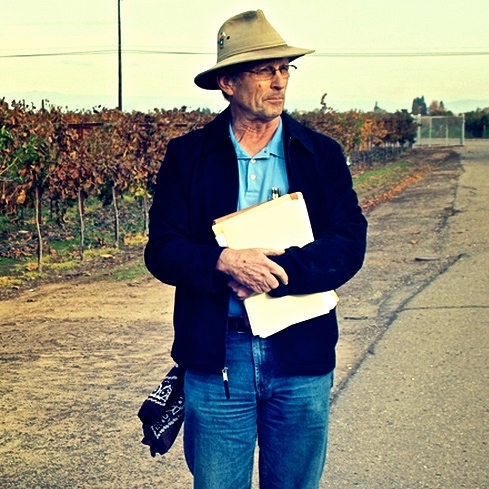
(Lodi Wine blog) Randy Caparoso, Jan. 1, 2018
This coming February 6, 2018, Lodi winegrowers will get together for their 66th Annual LODI GRAPE DAY. They will also mark the occasion with a celebration of the retirement of Paul Verdegaal, who has been working full-time as San Joaquin County's viticulture, bush berry and almond Farm Advisor under the auspices of UCCE (University of California Cooperative Extension) since 1986.
http://www.lodiwine.com/blog/Tribute-to-Paul-Verdegaal---one-of-Lodi-s--men-behind-the-curtain-

